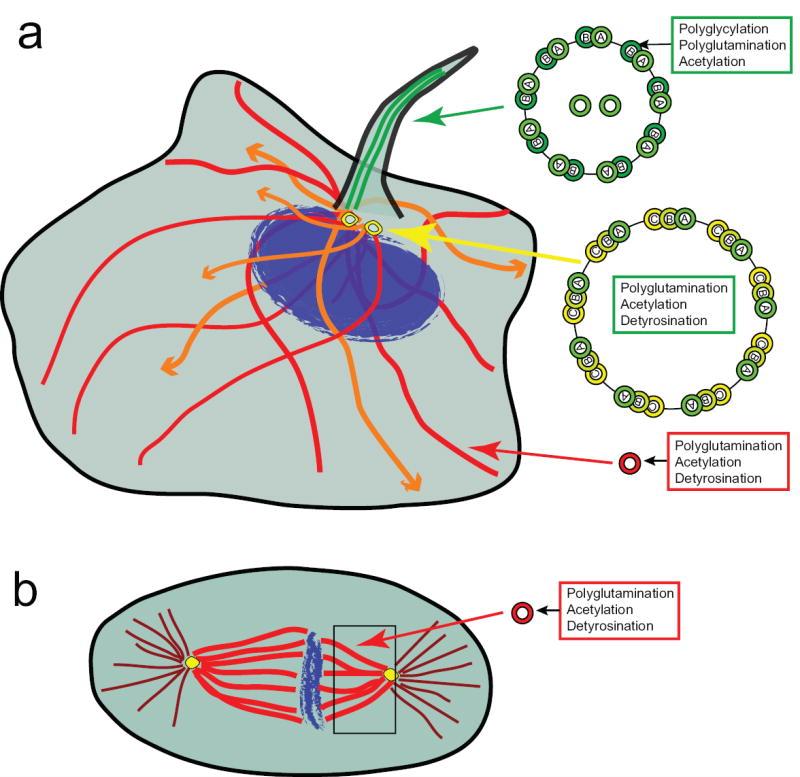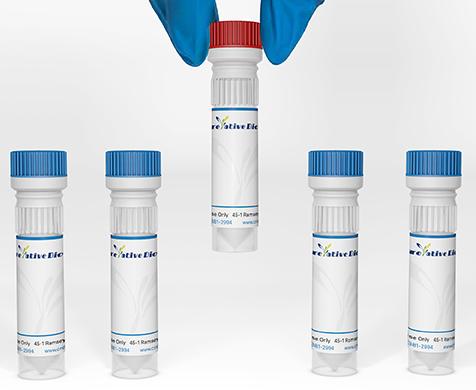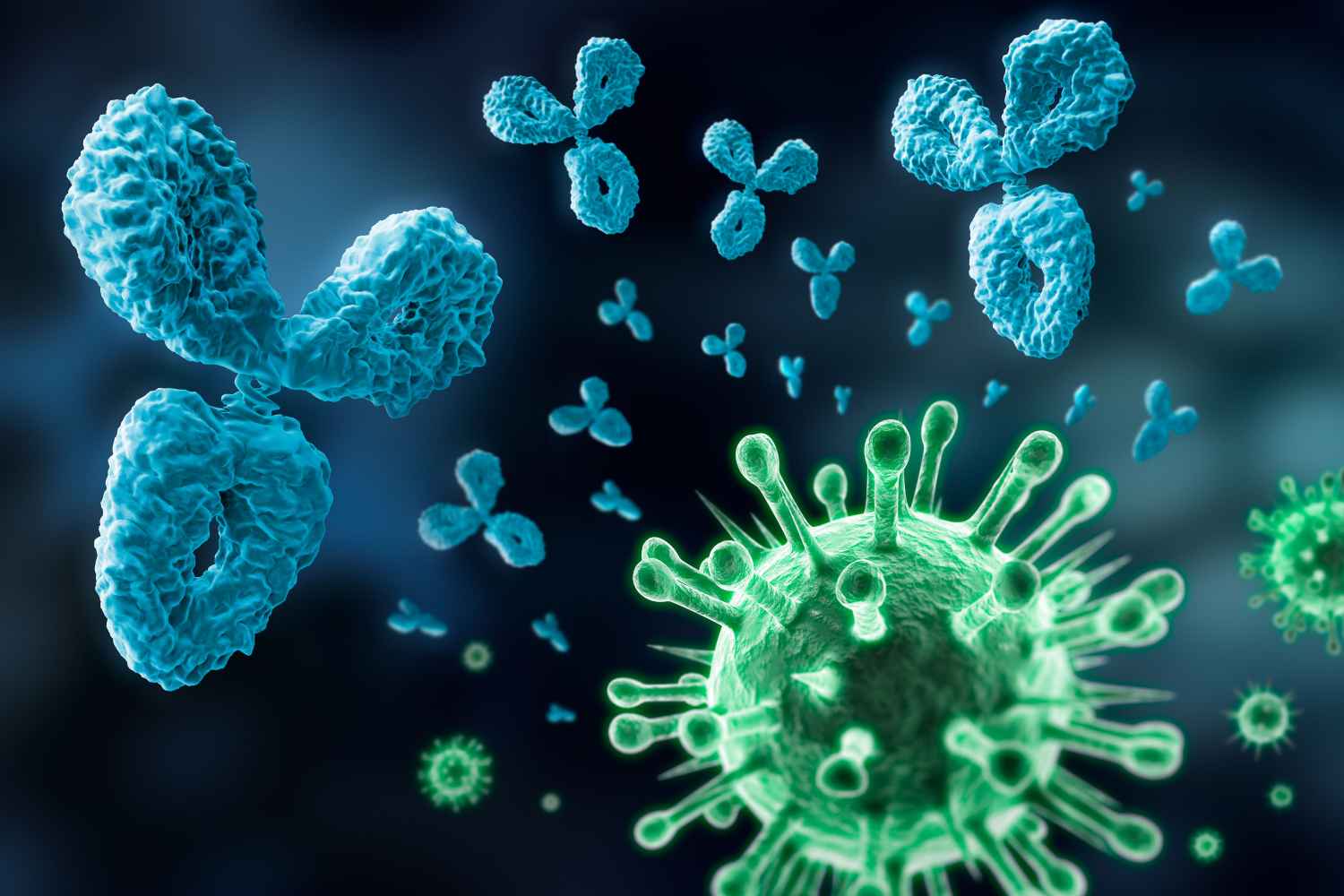Tubulin Antibodies
Background
Tubulin functions as a spherical protein structure which creates microtubules throughout eukaryotic cells primarily within their cytoskeletal framework. The protein structures into extended filaments which serve both structural functions and transport roles to support cell division and maintain cell shape. The cellular processes of mitosis and intracellular trafficking depend on tubulin as an essential component. Scientists first identified tubulin as a fundamental microtubule component during the 1950s. Scientists have thoroughly investigated the dynamic structure of tubulin because it polymerizes and depolymerizes which has advanced our knowledge about cytoskeletal function and cellular mechanics.
Structure of Tubulin
The protein tubulin is considered sizable weighing around 55 kDa though this value can vary slightly across species, to variances, in amino acid sequences and post transcriptional changes.
| Species | Human | Mouse | Cow | Arabidopsis |
| Molecular Weight (kDa) | 55 | 55 | 55 | 55 |
| Primary Structural Differences | Composed of α-tubulin and β-tubulin, each with a molecular weight of approximately 55 kDa. | Similar to human tubulin, with high sequence homology. | Composed of α-tubulin and β-tubulin, each with a molecular weight of approximately 55 kDa. | Contains unique nuclear export sequences (NESs) in both α- and β-tubulin. |
The tubulin protein has 450 acids and takes on a rounded shape, with alpha helices and beta sheets in its main structure formation. The arrangement of tubulins protein creates alpha tubulin and beta tubulin heterodimers that link together to form microtubules. The function of tubulin within the cytoskeleton is to offer support and aid in moving substances within the cell. Tubulins secondary structure primarily consists of alpha helices and beta sheets that create a site, for GTP other proteins associated with microtubules. The flexibility of the beta tubulins C terminal section plays a role, in microtubule dynamics; on the hand the N region of alpha tubulin helps in stabilizing the heterodimer.
 Fig. 1 Localization of microtubule structures and modified tubulin subunits in mammalian cells.1
Fig. 1 Localization of microtubule structures and modified tubulin subunits in mammalian cells.1
Key structural properties of tubulin:
- Globular shape with alpha and beta subunits
- Forms heterodimers essential for function
- Polymerizes into microtubules for structure
- Contains GTP binding site for activity
- Flexible C-terminal region for dynamics
- Stabilizes heterodimer with N-terminal region
Functions of Tubulin
The main role of tubulin is to create microtubules that support the structure of cells; additionally it plays a part, in cell activities, like transport and cell division.
| Function | Description |
| Microtubule Formation | Forms microtubules providing structural support |
| Intracellular Transport | Facilitates movement of organelles and vesicles |
| Cell Division | Essential for mitosis and meiosis |
| Cytoskeletal Stability | Maintains cell shape and integrity |
| Neuronal Development | Guides axon growth and synapse formation |
The polymerization dynamics of tubulin are reversible in contrast to other cytoskeletal proteins, indicating its role in dynamic cellular processes and ability to rapidly reorganize.
Applications of Tubulin and Tubulin Antibody in Literature
1. Janke, Carsten, and Maria M. Magiera. "The tubulin code and its role in controlling microtubule properties and functions." Nature Reviews Molecular Cell Biology 21.6 (2020): 307-326. https://doi.org/10.1038/s41580-020-0214-3
The article explains how tubulin functions as a fundamental element of microtubules while presenting the tubulin code which determines microtubule characteristics and operations through post-translational modifications that affect cellular operations and dynamics.
2. Binarová, Pavla, and Jack Tuszynski. "Tubulin: structure, functions and roles in disease." Cells 8.10 (2019): 1294. https://doi.org/10.3390/cells8101294
The article presents tubulin as a fundamental cytoskeletal component by describing its structure and functions and its involvement in different diseases. The article explains how tubulin's distinctive characteristics together with its post-translational modifications affect microtubule dynamics and cellular processes which makes it a potential therapeutic target.
3. Hammond, Jennetta W., Dawen Cai, and Kristen J. Verhey. "Tubulin modifications and their cellular functions." Current opinion in cell biology 20.1 (2008): 71-76. https://doi.org/10.1016/j.ceb.2007.11.010
The article discusses how alterations, to tubulin play a role, in managing functions and showcases their various contributions to the movements and strength of microtubules which could be targeted for treating associated illnesses.
4. Downing, Kenneth H., and Eva Nogales. "Tubulin and microtubule structure." Current opinion in cell biology 10.1 (1998): 16-22. https://doi.org/10.1016/S0955-0674(98)80082-3
The article discusses the significance of tubulin, in the structure of microtubules. Introduces its involvement in shaping the cells cytoskeleton and influencing its function well as playing a role, in intra cellular transport and division.
5. Saxton, William M., et al. "Tubulin dynamics in cultured mammalian cells." Journal of Cell Biology 99.6 (1984): 2175-2186. https://doi.org/10.1083/jcb.99.6.2175
The article discusses the movement of tubulin, in cells grown in a lab. Explains how microtubules are built up and broken down to help with cell division and internal transportation processes.
Creative Biolabs: Tubulin Antibodies for Research
Creative Biolabs focuses on creating premium tubulin antibodies for use, in research and various industrial purposes. It offers a range of monoclonal and polyclonal antibodies designed for ELISA Fow cytometry Western blotting immunohistochemistry and other diagnostic techniques.
- Custom Tubulin Antibody Solutions: Bespoke antibody development to fulfill precise research needs.
- Large-Scale Production: High-volume antibody manufacturing for industrial collaboration.
- Technical Guidance: Specialized advice for optimizing protocols and resolving technical challenges.
- Aliquoting Solutions: Pre-measured aliquots for stable long-term storage and reliable experimental results.
If you need details, about our tubulin antibodies or require custom services or technical assistance from us please feel free to reach out to us via info@creative-biolabs.com.
Reference
- Hammond, Jennetta W., Dawen Cai, and Kristen J. Verhey. "Tubulin modifications and their cellular functions." Current opinion in cell biology 20.1 (2008): 71-76. https://doi.org/10.1016/j.ceb.2007.11.010
Anti-Tubulin antibodies
 Loading...
Loading...
Hot products 
-
Mouse Anti-CD8 Recombinant Antibody (C1083) (CBMAB-C1083-LY)

-
Mouse Anti-ACVR1C Recombinant Antibody (V2-179685) (CBMAB-A1041-YC)

-
Mouse Anti-ALX1 Recombinant Antibody (96k) (CBMAB-C0616-FY)

-
Mouse Anti-AMOT Recombinant Antibody (CBYC-A564) (CBMAB-A2552-YC)

-
Mouse Anti-CCDC25 Recombinant Antibody (CBLC132-LY) (CBMAB-C9786-LY)

-
Mouse Anti-BCL6 Recombinant Antibody (CBYY-0442) (CBMAB-0445-YY)

-
Mouse Anti-CTNND1 Recombinant Antibody (CBFYC-2414) (CBMAB-C2487-FY)

-
Mouse Anti-EIF4G1 Recombinant Antibody (2A9) (CBMAB-A2544-LY)

-
Mouse Anti-CAT Recombinant Antibody (724810) (CBMAB-C8431-LY)

-
Mouse Anti-CFL1 (Phospho-Ser3) Recombinant Antibody (CBFYC-1770) (CBMAB-C1832-FY)

-
Mouse Anti-BLNK Recombinant Antibody (CBYY-0623) (CBMAB-0626-YY)

-
Mouse Anti-APC Recombinant Antibody (CBYC-A661) (CBMAB-A3036-YC)

-
Mouse Anti-ADV Recombinant Antibody (V2-503423) (CBMAB-V208-1364-FY)

-
Rabbit Anti-ADRA1A Recombinant Antibody (V2-12532) (CBMAB-1022-CN)

-
Mouse Anti-BIRC5 Recombinant Antibody (6E4) (CBMAB-CP2646-LY)

-
Mouse Anti-AQP2 Recombinant Antibody (G-3) (CBMAB-A3359-YC)

-
Mouse Anti-C5b-9 Recombinant Antibody (aE11) (CBMAB-AO138LY)

-
Mouse Anti-BPGM Recombinant Antibody (CBYY-1806) (CBMAB-2155-YY)

-
Mouse Anti-BRD3 Recombinant Antibody (CBYY-0801) (CBMAB-0804-YY)

-
Mouse Anti-EMP3 Recombinant Antibody (CBFYE-0100) (CBMAB-E0207-FY)

- AActivation
- AGAgonist
- APApoptosis
- BBlocking
- BABioassay
- BIBioimaging
- CImmunohistochemistry-Frozen Sections
- CIChromatin Immunoprecipitation
- CTCytotoxicity
- CSCostimulation
- DDepletion
- DBDot Blot
- EELISA
- ECELISA(Cap)
- EDELISA(Det)
- ESELISpot
- EMElectron Microscopy
- FFlow Cytometry
- FNFunction Assay
- GSGel Supershift
- IInhibition
- IAEnzyme Immunoassay
- ICImmunocytochemistry
- IDImmunodiffusion
- IEImmunoelectrophoresis
- IFImmunofluorescence
- IGImmunochromatography
- IHImmunohistochemistry
- IMImmunomicroscopy
- IOImmunoassay
- IPImmunoprecipitation
- ISIntracellular Staining for Flow Cytometry
- LALuminex Assay
- LFLateral Flow Immunoassay
- MMicroarray
- MCMass Cytometry/CyTOF
- MDMeDIP
- MSElectrophoretic Mobility Shift Assay
- NNeutralization
- PImmunohistologyp-Paraffin Sections
- PAPeptide Array
- PEPeptide ELISA
- PLProximity Ligation Assay
- RRadioimmunoassay
- SStimulation
- SESandwich ELISA
- SHIn situ hybridization
- TCTissue Culture
- WBWestern Blot








